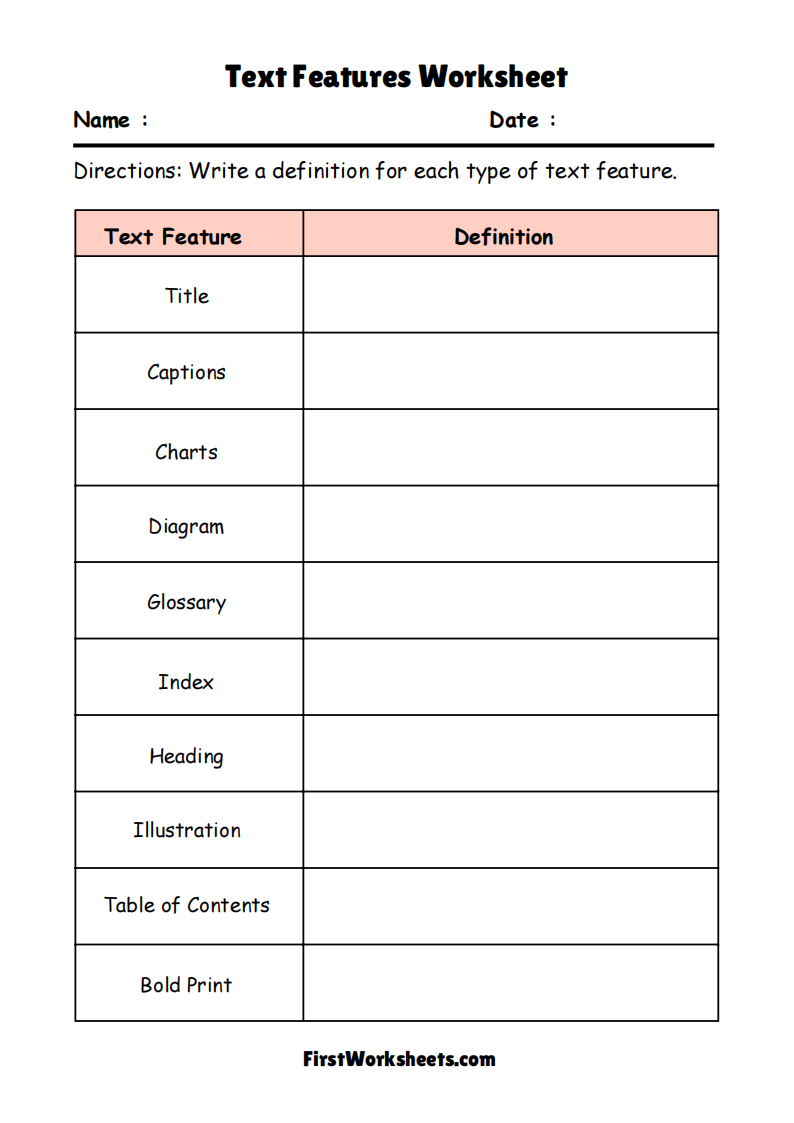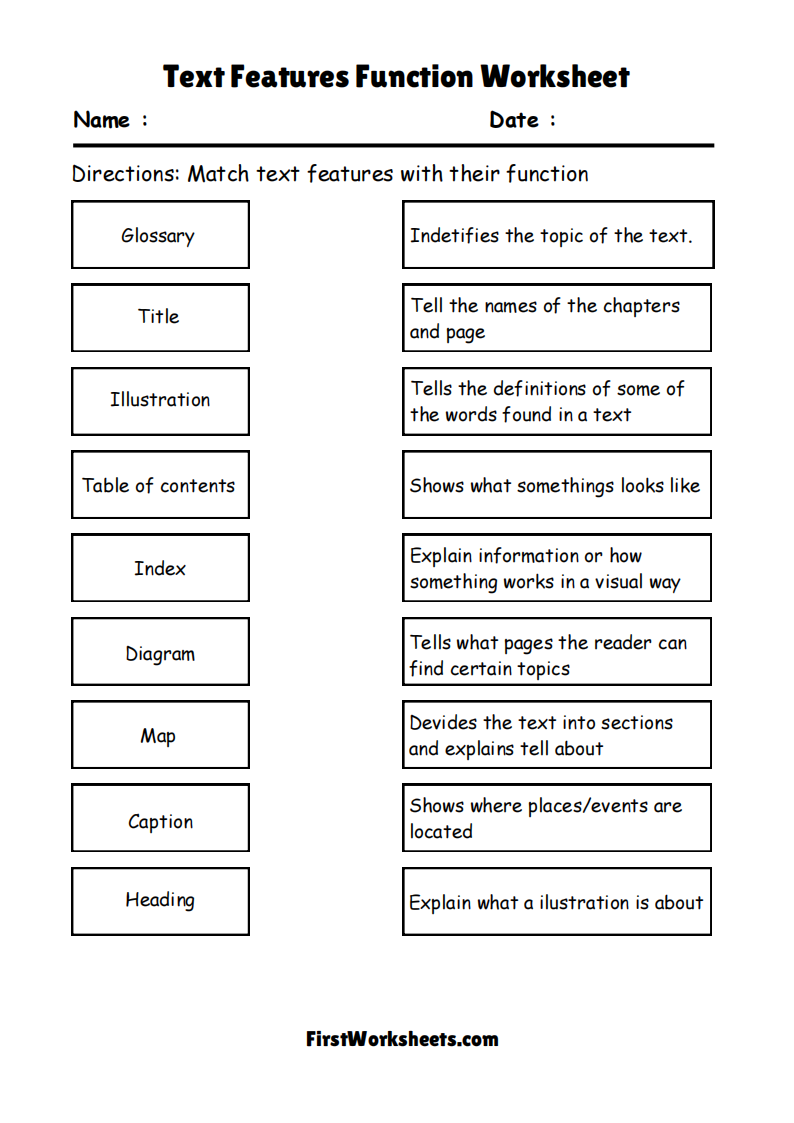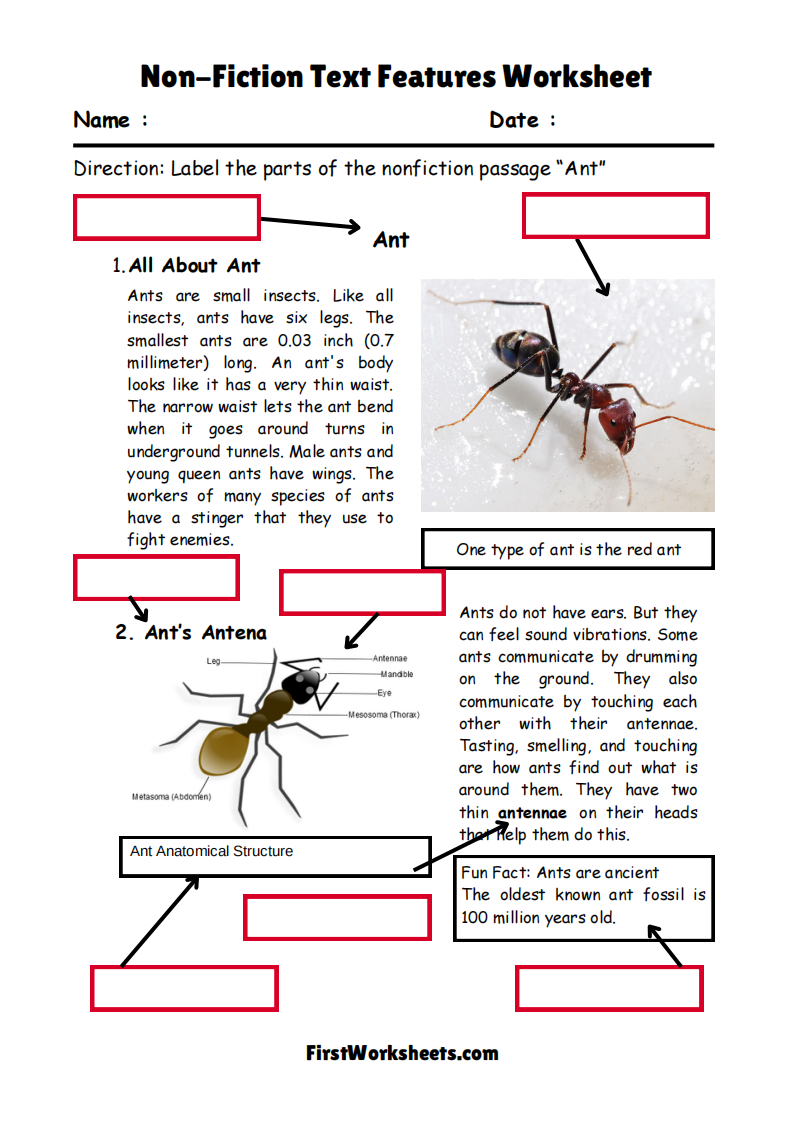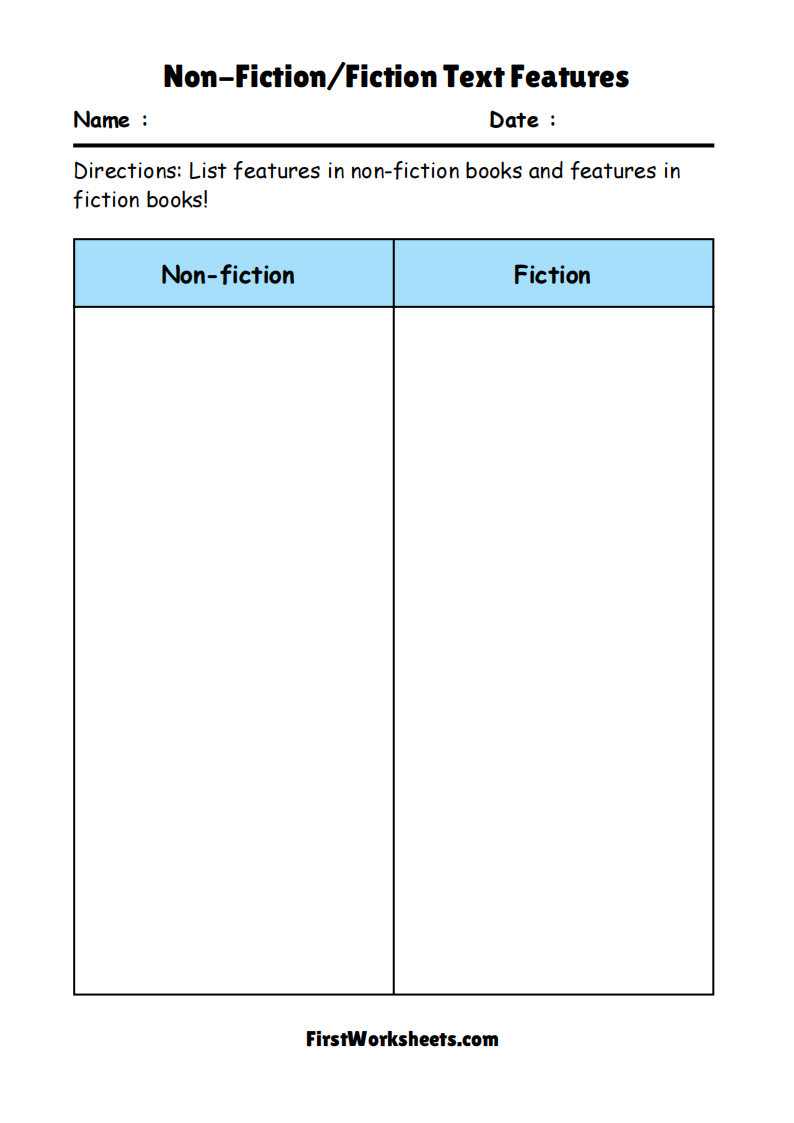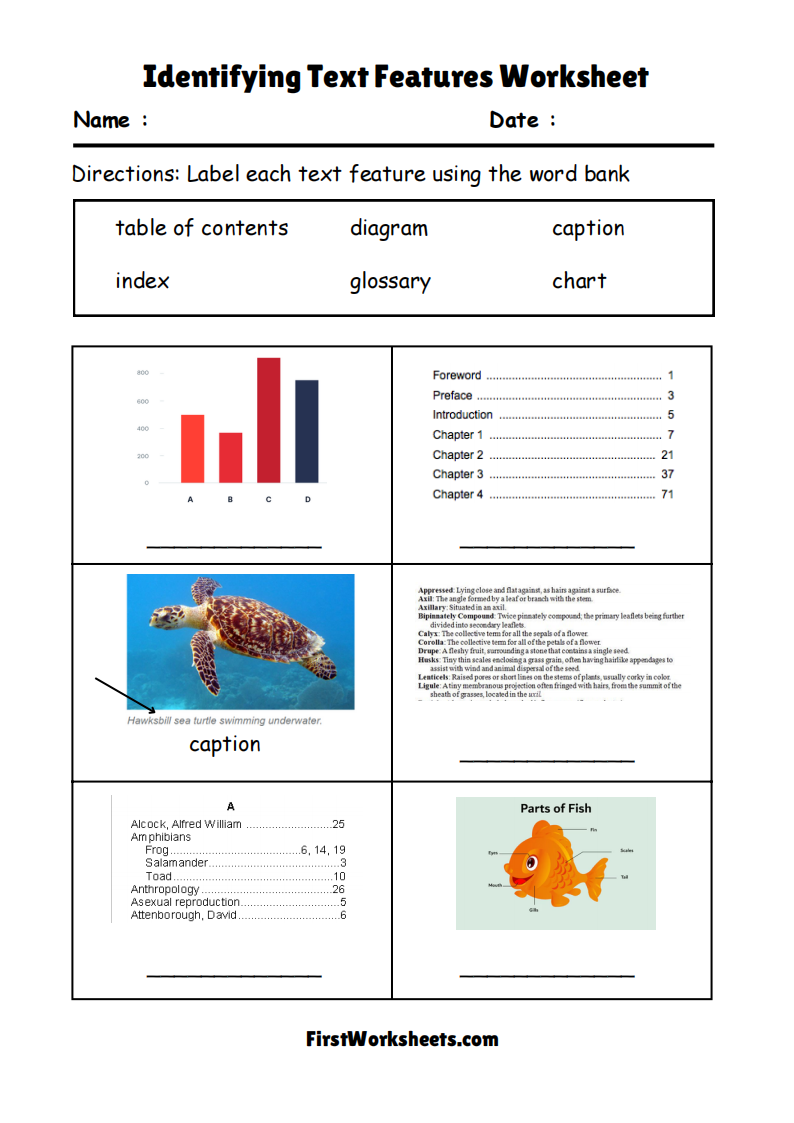Text Features Worksheets
Text features worksheets help students recognize and understand the various components that can be found in a text. These features aid in comprehension by organizing information in a way that makes it more accessible. Here’s an in-depth look at what text features worksheets usually involve and how they can be beneficial for students:
1. Purpose of Text Features Worksheets
- Comprehension Aid: Text features like headings, subheadings, bold print, and bullet points help students identify key ideas and important information in a text. Worksheets focusing on these features teach students how to use them to enhance their understanding.
- Navigational Skills: Students learn to navigate through texts more efficiently. They understand how to use elements like the table of contents, index, and glossary to find specific information quickly.
- Critical Thinking: These worksheets often require students to analyze why an author chose certain text features and how they contribute to the meaning or organization of the text.
2. Common Text Features Covered
- Titles and Headings: Worksheets include exercises that teach students how titles and headings give clues about the main idea of the text. They might involve matching headings to paragraphs or predicting the content based on headings.
- Subheadings: Help students break down the text into manageable sections, improving their ability to focus on specific aspects of the topic.
- Bold and Italics: Students learn how bold and italicized words are used for emphasis or to introduce new vocabulary.
- Bullets and Lists: Worksheets include activities where students identify or create lists and bullet points to organize information effectively.
- Captions and Labels: These features explain images or diagrams. Worksheets might include exercises where students write captions for images or match labels to diagrams.
- Graphs, Charts, and Tables: Students practice interpreting data from various graphical elements. Worksheets might involve reading information from a chart and answering questions about it.
- Sidebars and Text Boxes: Sidebars provide additional information related to the main text. Worksheets might involve identifying the purpose of a sidebar or summarizing its content.
- Hyperlinks: In digital texts, hyperlinks can provide additional resources. Worksheets can include activities where students learn to follow and evaluate the usefulness of these links.
- Glossary and Index: Students practice using these tools to find the meanings of new words or to locate specific information in the text.
3. Types of Worksheets and Activities
- Identification Activities: These worksheets ask students to identify different text features within a given passage. For example, students might highlight headings, subheadings, and bold words in different colors.
- Matching Exercises: Students match text features with their definitions or examples. For instance, they might match the word “index” with its function.
- Fill-in-the-Blanks: Worksheets with passages where certain text features are missing. Students fill in the blanks with appropriate headings, labels, or captions.
- Comprehension Questions: Students answer questions that require them to use text features to locate information. For example, “According to the chart on page 5, what is the main cause of…?”
- Creating Text Features: Advanced worksheets may ask students to create their own text features. For instance, they might be given a passage and asked to add headings, captions, and bullet points.
- Comparison Activities: Students compare two texts with different features to understand how each contributes to their comprehension of the material.
4. Benefits of Using Text Features Worksheets
- Enhanced Reading Skills: By familiarizing students with text features, these worksheets enhance their reading skills, particularly for informational and nonfiction texts.
- Improved Information Retrieval: Students become adept at finding and extracting key information quickly, an essential skill for academic research and real-world reading.
- Better Understanding of Author’s Intent: Analyzing text features helps students understand why an author structured the text in a particular way, deepening their comprehension.
- Preparation for Standardized Tests: Many standardized reading tests include questions about text features. Practice with these worksheets can improve students’ test-taking skills.
5. Customizing Worksheets for Different Levels
- Elementary Level: Worksheets for younger students might focus on simple features like titles, pictures, and bold words, with more visual and hands-on activities.
- Middle School Level: At this level, worksheets might include more complex features like graphs, charts, and indexes, requiring deeper analysis and interpretation.
- High School Level: Advanced worksheets involve critically analyzing the use of text features in complex informational texts, comparing multiple sources, and even creating entire texts using a range of features.
6. Incorporating Technology
- Interactive Worksheets: Digital worksheets can include interactive elements like clickable glossaries, hyperlinks, and embedded videos.
- Online Texts: Students can practice identifying text features in digital formats, including websites and eBooks, enhancing their digital literacy.
7. Assessment and Feedback
- Assessing Understanding: Teachers can use text features worksheets as formative assessments to gauge students’ understanding of how to use text features.
- Providing Feedback: These worksheets also provide an opportunity for targeted feedback, helping students refine their ability to use text features effectively.
In summary, text features worksheets are essential tools in teaching students how to effectively navigate, interpret, and utilize various elements of informational texts. They support comprehension, foster critical thinking, and equip students with the skills necessary for academic success and lifelong learning.
